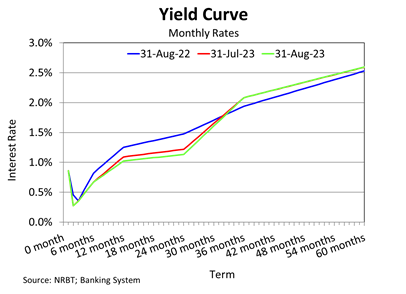Squash season drove exports volume to a new high record
- Details
- Category: Economic Releases
- Created: 04 April 2017
Agricultural Exports Volume October 2016
| Oct 16 | Sep 16 | Aug 16 | Jul 16 | |
| Total volumes (tonnes) |
3,327.4 | 814.01 | 689.02 | 880.3 |
| 1 - Revised upward from 785.0 tonnes due to revised figures for brown coconut and breadfruit |
||||
| 2 - Revised downward from 707.3 tonnes due to a downward revision for brown coconut | ||||
The squash harvesting season was the major contributor that drove the hike in total agricultural exports volume over the month by 2513.4 tonnes (308.8%) to 3,327.4 tonnes. This is the highest squash export on record since October 2013 with 3,302.3 tonnes. Total squash exports over the month increased by 2693.2 tonnes which was due mainly to higher export of Tongan squash of 2,670.8 tonnes. Similar to previous years, October recorded the highest monthly exports due to the squash season.
Exports of butternut squash, green coconuts, giant taro, taro tarua and pele leaves also contributed to the monthly increase. This offset a decline in exports of yams, brown coconuts, cassava, sweet potatoes, breadfruits, mulberry juice and kava products over the month. The continuous shortage in the supply of kava-Tonga and coconut contributed to a fall in the export of these products.
The squash produce was exported to Japan and Korea while Tonga prospects future squash exports to China. Majority of the other agricultural produce are exported to Tonga’s major trading partners including New Zealand, Australia, USA, American Samoa, and Fiji.
The rise in export volume is in line with a $0.8 million (86.0%) increase in receipts of agricultural export proceeds to $1.6 million. The proceeds mainly denominated in US dollar was due mostly to squash export proceeds. Agricultural export proceeds for November 2016 are expected to rise, reflecting the substantial squash exports for this month.
In year ended terms, total agricultural export volume recorded the highest growth which increased by 5,053.0 tonnes (76.3%) as a result of a significant increase in the exports of squash products. Other products which contributed to this annual growth include cassava, yam, sweet potatoes, breadfruits, watermelon and chillies. The improved weather conditions throughout the year may have contributed to this strong growth in export volume. This was reflected in rainfall recorded for the year increasing by 710.7 millimetres (63.9%) compared to the previous year. The continuous support from Government through the low interest rate Government Development Loans also supported growth in the agricultural sector as reflected in a rise of $2.4 million (30.1%) in business loans to the agricultural sector. On the other hand, exports of taro, kava-Tonga, coconuts, sandalwood, mulberry juice, vanilla and taro tarua & pele leaves declined over the year. The annual agricultural export receipts also rose by $4.2 million (99.9%) to $8.4 million. The higher export receipts were for squash and crops (root crops and Tongan crops) supported by the strengthening of the Japanese Yen and US dollar against the Tongan Pa’anga.
On the outlook, NRBT anticipates that both volume for export and domestic production will increase in 2016/17 supporting the expected growth in the agricultural sector. This is supported by the Tonga Agricultural Sector Plan (TASP) that was recently approved by Cabinet. The re-opening of the High Temperature Forced Air facility at the Fua’amotu Airport would support the export of breadfruit, papaya, tomatoes and the new products to be introduced such as chillies and eggplant. The initiatives from the January 2016 Agricultural Annual Conference to improve the existing infrastructure for farmers should also support the forecast of higher agricultural output, including the opening of the multi-purpose pack house in ‘Eua. The biogas demonstration farm set up with the assistance of the Chinese Government would provide organic fertilizer that may support the production of high quality fruits such as seedless watermelons.
Furthermore, the possibility of a new market for Tonga’s squash exports to China may boost total agricultural export volumes. The introduction of the Air New Zealand Boeing 777-200 aircraft provides extra capacity for more exports volume going forward. In addition, Tonga is currently negotiating the Pacific Agreement on Closer Economic Relations (PACER) Plus which may contribute to higher exports. On the contrary, the export of kava-Tonga is expected to decline as liaisons with growers have indicated low supply for the next 3 years due to the drought in past years. The August 2016 Climate update by the Meteorology Division advised that a weak La Nina (more rainfall than usual during summer) remains possible in 2016 and the rainfall is expected to remain normal (usual) in October 2016 to March 2017. The weather uncertainty poses a risk to the agricultural sector outlook.
Download the full report: Agricultural Exports Volumes - October 2016

